The development of social skills in autistic children is a multifaceted endeavor, one that requires a nuanced understanding of the unique challenges and strengths inherent to the autism spectrum. While traditional approaches to socialization may not always resonate with these children, emerging strategies tailored to their specific needs have shown promise. These methods can boost social skills, ranging from structured social skills training to visual aids and social narratives, and aim to bridge the gap between the autistic child’s perception and the social world around them. However, the effectiveness of these interventions often hinges on a delicate balance—implementing them in a way that engages and respects the child’s individuality.
As we explore these approaches, a critical question emerges: How can caregivers and educators best facilitate the social development of autistic children in a manner that honors their unique perspectives and fosters genuine connectivity?
The development of social skills in autistic children is a multifaceted endeavor, one that requires a nuanced understanding of the unique challenges and strengths inherent to the autism spectrum. While traditional approaches to socialization may not always resonate with these children, emerging strategies tailored to their specific needs have shown promise. These methods can boost social skills, ranging from structured social skills training to visual aids and social narratives, and aim to bridge the gap between the autistic child’s perception and the social world around them.
However, the effectiveness of these interventions often hinges on a delicate balance—implementing them in a way that engages and respects the child’s individuality. As we explore these approaches, a critical question emerges: How can caregivers and educators best facilitate the social development of autistic children in a manner that honors their unique perspectives and fosters genuine connectivity?
Key Takeaways
- Children with autism often struggle with social interaction and understanding social cues.
- Social skills training provides structured opportunities for learning and practicing social behaviors.
- Adaptive play methods and positive reinforcement can help bridge the gap between structured training and spontaneous interactions.
- Role-playing exercises and social stories effectively enhance social competencies and address social challenges.
Understanding Autism’s Social Challenges
Children with autism often encounter significant challenges in navigating the complex landscape of social interaction, which can impede their ability to form meaningful connections with others. For many autistic children, finding comfort and understanding within social situations does not come intuitively. The nuances of conversation, such as recognizing social cues or understanding the perspective of others, can be perplexing. Developing social competencies is critical in supporting their growth and integration into various societal contexts.
Social skills training addresses these challenges, providing structured opportunities for autistic children to learn and practice essential social behaviors. This training often involves explicit instruction, modeling, and reinforcement of positive social behaviors, enhancing their competence in peer interactions. Through repeated exposure to social scenarios within a supportive environment, autistic children can gradually acquire the tools necessary for successful social engagement.
Professionals working with these children adopt evidence-based, client-centered approaches, focusing on each child’s strengths and needs. Development-focused strategies, including play and role-play, allow for the practical application of social skills in a safe, controlled setting, fostering confidence and autonomy in social exchanges.
Embracing Adaptive Play Methods

Building on the foundation of social skills training, adaptive play methods offer a dynamic approach to enhancing the social competencies of autistic children by engaging them in interactive and enjoyable activities tailored to their unique needs. Adaptive play methods are designed to bridge the gap between structured social skills training and spontaneous interactions, creating opportunities for autistic children to practice social nuances in a controlled yet flexible setting.
By fostering an environment that is both supportive and challenging, adaptive play encourages children to interact with others, reinforcing the lessons learned during structured social skills training. For instance, incorporating peer modeling within play sessions can help autistic children observe and replicate appropriate social behaviors, improving their ability to communicate and engage with peers.
Moreover, visual supports and customized resources in adaptive play can address individual needs, making social skill development more accessible for autistic children. Positive reinforcement, such as praise for successful interactions, further motivates and reinforces the desired behaviors. Ultimately, adaptive play methods not only provide a practice social platform for autistic children but also instill a sense of achievement and confidence that is crucial for their ongoing social development.
Encouraging Positive Social Behavior
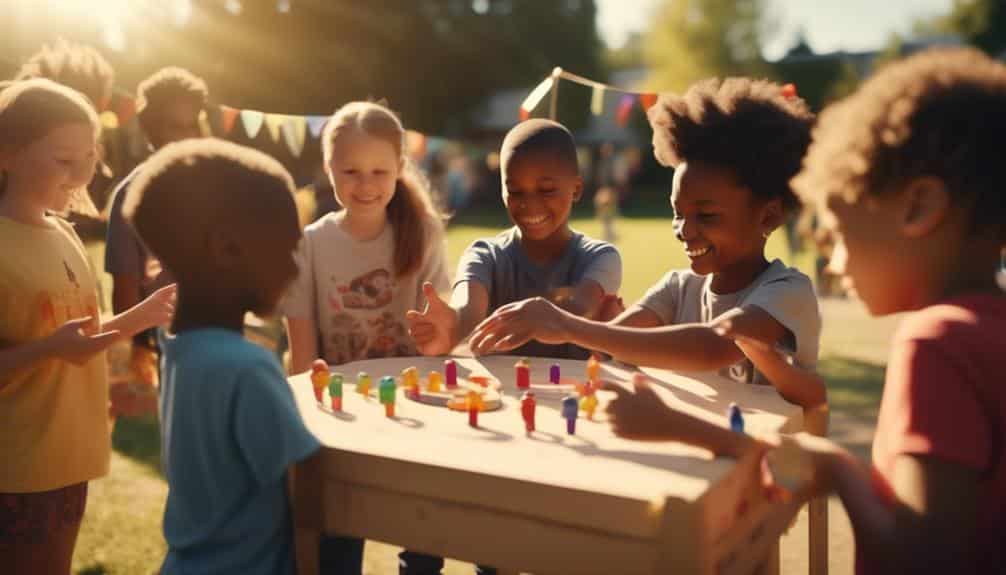
To foster positive social behavior in autistic kids, it is essential to consistently reinforce their successful interactions with specific praise and tangible rewards. This strategy, known as positive reinforcement, is paramount in helping children learn social skills effectively. Here are the critical approaches to encouraging positive social behavior:
- Leverage Personal Strengths: Each child’s unique abilities should be utilized to increase their motivation for social interactions, making the process more engaging and meaningful.
- Incorporate Peer Modeling: Encourage using natural interactions with peers to reinforce positive social behavior, allowing children to learn from one another in an organic setting.
- Structured Social Groups: Create groups with clear expectations and appropriate support to provide a safe environment for practicing social skills.
- Teach Empathy and Social Cues: Use tools like social narratives and social cartooning to convey social rules and the importance of empathy, enhancing the understanding of social contexts.
Utilizing Role-Playing Exercises
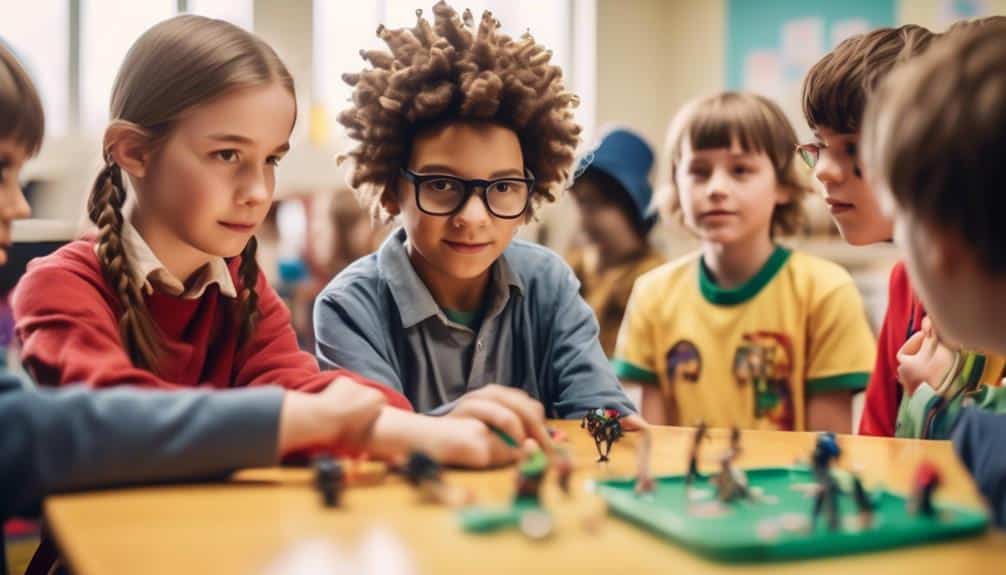
Having established the foundation of encouraging positive social behavior, it is equally essential to engage autistic children in role-playing exercises further to enhance their social competencies in a controlled setting. These role-playing exercises are vital for social skill development, providing a structured method for children with autism to practice and internalize essential social skills. By simulating real-life scenarios, children learn to navigate social cues, such as facial expressions and body language, which are often challenging to interpret.
Through role-playing, children with autism can safely explore the dynamics of social interaction, including the importance of taking turns in conversation, active listening, and appropriate responses. These exercises empower them to initiate and maintain conversations, a crucial skill for building relationships. Moreover, role-playing provides opportunities to address and work through social problems, enabling children to develop problem-solving strategies in a low-pressure environment.
The benefits of role-playing extend beyond the session itself, as the confidence gained through practice can significantly improve a child’s ability to engage with others in their daily lives. By fostering these skills in a supportive, client-centered manner, role-playing exercises contribute substantially to the holistic development of social abilities in autistic children.
Incorporating Social Stories
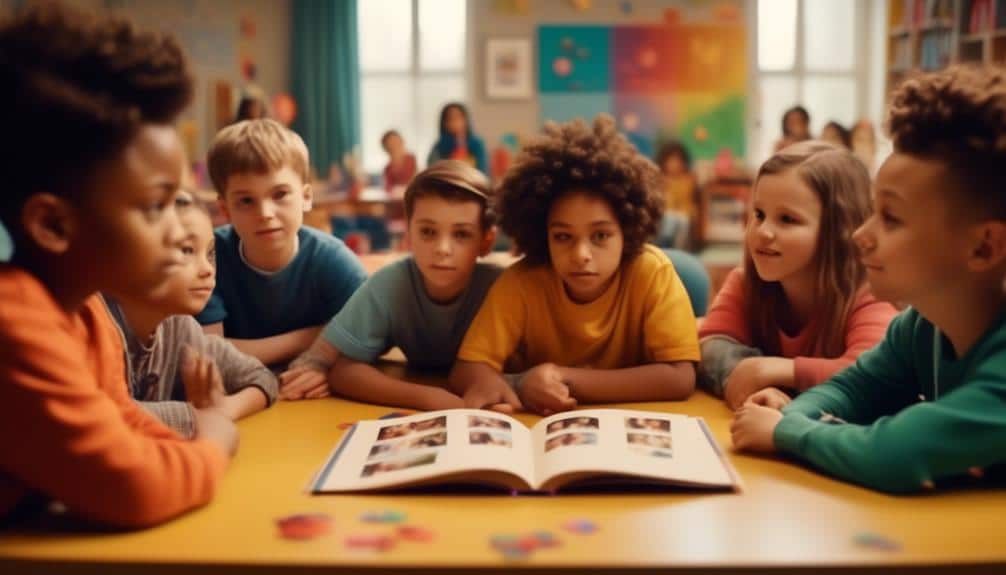
In conjunction with role-playing exercises, incorporating social stories into the therapeutic regimen offers a narrative-based strategy to teach autistic children about complex social interactions and behaviors. These stories are tailored to help children on the Autism Spectrum understand and navigate the unwritten rules of various social settings, facilitating the acquisition of new skills in a structured yet engaging manner.
To further elucidate the significance of social stories, consider the following points:
- Personalized Learning: Children learn best when lessons are relevant to their experiences. Social stories can be customized to address a child’s unique social challenges.
- Visual Support: Incorporating pictures, words, and checklists can enhance understanding and retention for visual learners.
- Practical Application: Through social stories, children can practice suggesting activities and playing games, which are pivotal for peer interaction.
- Social Comprehension: Narratives that delineate social rules and expectations allow children to grasp the subtleties of social conduct.
Applying Visual Support Techniques
Visual support techniques, such as Picture Exchange Communication Systems (PECS) and visual schedules, offer concrete cues that aid autistic children in grasping and applying social norms. By creating tailored social stories, these children can visualize and rehearse appropriate social interactions, enhancing their ability to engage with peers. Implementing these strategies consistently across various environments, including home and school, is crucial for promoting the generalization of social skills.
Utilizing Picture Exchange Systems
Picture Exchange Systems, as a form of visual support, offers a structured approach to bolster the development of social skills in children with autism by facilitating communication and enhancing learning experiences. These systems can be pivotal in helping autistic children by:
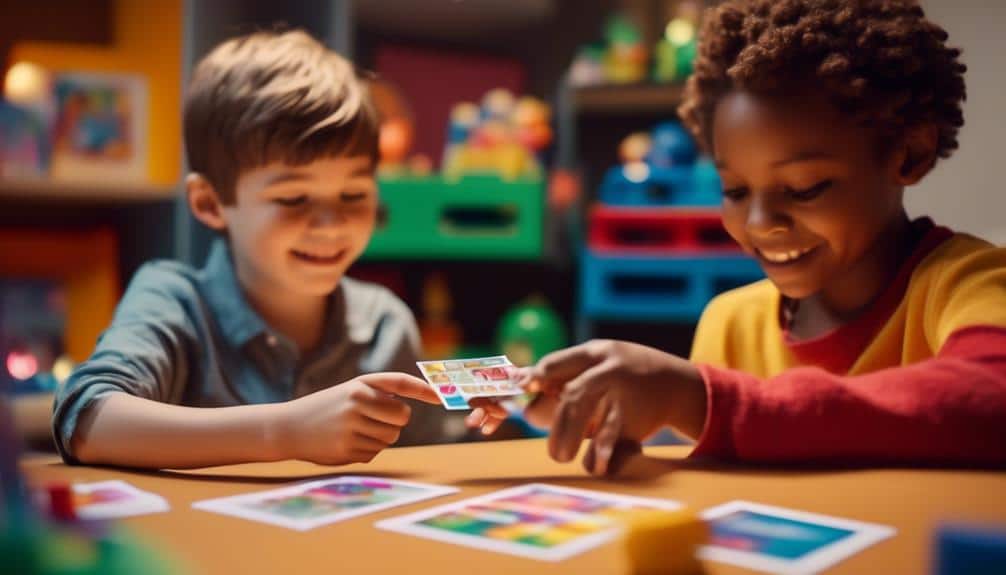
- Prompting conversation topics and guiding gameplay sequences can reduce social anxiety and improve engagement.
- We are enhancing the understanding of social expectations through clear and consistent visual cues.
- We encourage the transfer of social skills across various settings, increasing adaptability and confidence.
- We support positive reinforcement strategies, which are critical for consolidating learned social behaviors.
Creating Social Stories
Building upon the foundation provided by Picture Exchange Systems, creating social stories is another technique that employs visual supports to enhance the social skill acquisition of children with autism. These carefully crafted narratives are designed to depict various social scenarios in which the child with autism might engage, thereby providing a structured guide that helps them navigate complex social landscapes.
| Key Components of Social Stories | Purpose |
|---|---|
| Pictures and Words | To offer visual cues to help your child learn and recall appropriate social behaviors. |
| Checklists and Prompt Cards | To provide sequential steps and prompts for engaging in social interactions. |
| Tailored Scenarios | To mirror real-life situations that a child with autism may encounter, enhancing relevance and understanding. |
Implementing Visual Schedules
Harnessing the structured nature of visual schedules can significantly bolster the daily routine of children with autism, offering them a clear roadmap of expected activities and transitions. These tools are essential in ABA therapy and other interventions to improve social skills. When consistently applied, visual schedules serve as an effective reinforcement technique, enhancing the ability of autistic children to use social skills in various settings.
- Create predictability, reducing anxiety about the unknown and supporting smoother transitions between activities.
- Enhance communication by using symbols and words that kids can understand and follow, fostering independence.
- Aid in time management development, a crucial skill for social interactions and daily living.
- Allow for customization to cater to individual needs and preferences, promoting a client-centered approach to social skill development.
Structuring Social Skill Sessions
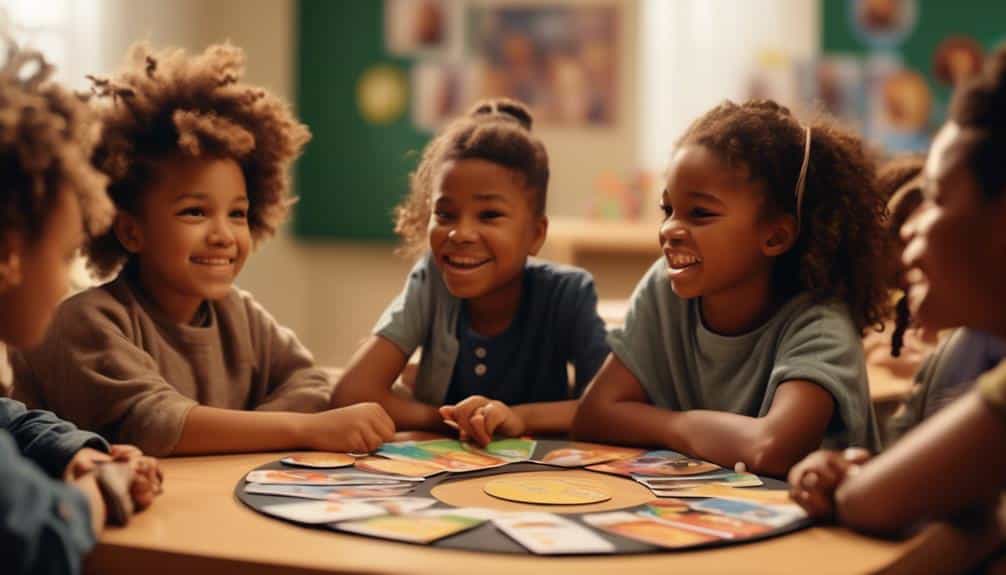
Structuring social skill sessions for autistic children requires careful planning and incorporating evidence-based practices. Role-playing scenarios can provide a safe and controlled environment for practicing interactions, while visual social stories can help children understand and navigate social situations. Additionally, creating opportunities for peer interaction within these sessions can promote the development of naturalistic social skills.
Role-Playing Scenarios
Role-playing scenarios are a powerful tool for autistic children to rehearse and refine social skills in a controlled, supportive environment. Through the use of role-playing, we can:
- Simulate social interactions that help children anticipate and practice responses in various settings.
- Teach and reinforce the recognition of different expressions and cues in a dynamic but safe context.
- Provide opportunities for autistic children to practice making friends, sharing, and cooperating with peers.
- Use visual supports and structured guidance to enhance skill acquisition and boost confidence.
Visual Social Stories
Visual Social Stories are a strategic tool to assist autistic children in navigating the complexities of interpersonal interactions by providing clear, visual examples of social cues and appropriate behaviors. These stories are a cornerstone in therapy that fosters the development of social skills, as they utilize pictures, words, and prompt cards tailored to the child’s learning preferences. By depicting various social scenarios, Visual Social Stories prepare autistic kids for real-life interactions, offering a blueprint for conversation topics, gameplay routines, and the social expectations they may encounter. This evidence-based and client-centered method ensures each story aligns with the individual’s developmental level and interests.
For those dedicated to serving this population, Visual Social Stories are an invaluable resource in the toolkit for enhancing social skills.
Peer Interaction Opportunities
To effectively develop social competencies in autistic children, it is imperative to create structured and natural peer interaction opportunities, allowing them to practice and generalize social skills in a supportive environment. Here are ways to structure these opportunities:
- Utilize peer modeling: Make sure your child is paired with peers who demonstrate strong social skills, providing your child the chance to observe and engage in positive social interactions.
- Create structured social groups: Children can find a sense of belonging in small, activity-based groups where expectations are clear and support is readily available.
- Teach empathy and social rules: Use social narratives to help your child understand social cues and the emotions of others.
- Apply skills across settings: Encourage your child to transfer learned skills to various environments, reinforcing their applicability and relevance.
Navigating Real-Life Social Scenarios
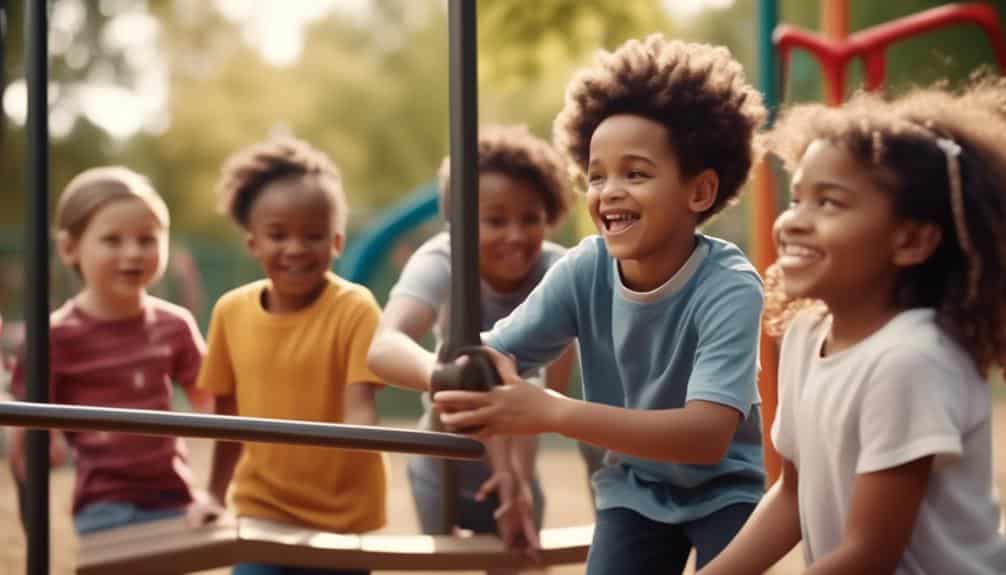
Successfully navigating real-life social scenarios requires that autistic children engage in varied practice activities that build their ability to take turns, follow rules, and interact effectively with peers. Practicing play scenarios at home is beneficial to help a child learn these essential social skills. This controlled environment allows for the reinforcement of turn-taking and adherence to rules in a less stressful setting.
Role-playing is a handy tool for preparing children for upcoming social events. A child can gain confidence and fluidity in social interactions by rehearsing activity suggestions and discussing potential conversation topics. Moreover, structured social skills training programs like the Westmead Feelings Program or PEERS offer evidence-based frameworks to help children understand and navigate real-life social scenarios.
Visual supports, including pictures, words, and checklists, can act as conversation prompts and guide children through gameplay sequences, enhancing their engagement and reducing anxiety. Peer modeling and structured social groups are practical platforms for autistic children to observe and practice social skills in a supportive environment. Teaching empathy and the nuances of social rules further solidifies their ability to interact with others empathetically and appropriately.
Celebrating Social Milestones

Recognizing and celebrating social milestones can reinforce the progress that autistic children make, encouraging them to continue developing their social skills. Acknowledging these achievements can be very motivating when a child reaches a new level of interaction or demonstrates a better understanding of social cues. To effectively celebrate these milestones and foster a supportive environment, consider the following strategies:
- Highlight Strengths: Utilize the child’s unique strengths to enhance social interactions. For example, if a child excels in art, incorporating this interest into social group activities might help them engage more naturally with peers.
- Encourage Peer Modeling: Facilitate opportunities for peer modeling and interaction, ensuring the child experiences different social dynamics and learns from them.
- Create Structured Groups: Establish structured social groups where celebrating social milestones is a regular activity, ensuring each child’s progress is acknowledged.
- Teach Empathy: Through teaching empathy and social rules, children learn to appreciate their social achievements and those of others.
Using evidence-based practices tailored to each child’s developmental level and needs is essential. By doing so, we help build a foundation for their social growth that is both affirming and empowering, ensuring that every child’s social skills are nurtured to acknowledge their individuality and reinforce their self-esteem.
Frequently Asked Questions
How Can I Help My Autistic Child Boost Social Skills?
To aid your child’s social skill acquisition, consider structured playgroups, visual aids for communication, and collaborating with educators to ensure skills are applied across various environments, leveraging their unique interests to engage and motivate them.
What Causes Poor Social Skills in Autism?
Autism spectrum disorder affects approximately 1 in 54 children and often impairs social interaction abilities due to challenges in communication and interpreting social cues, necessitating tailored support and interventions.
Can Autistic People Improve Social Skills?
Yes, autistic individuals can enhance their social skills through tailored interventions like behavioral therapy, communication strategies, and consistent practice in various settings, contributing to meaningful improvements in social interactions and relationships.
How Can I Help Someone With Autism Socially?
To support an individual with autism socially, one ironically begins where interaction feels most elusive. Evidence-based, client-centered approaches such as tailored social skills training and visual aids foster crucial communicative and empathetic connections.
Conclusion
Children with autism spectrum disorder often face challenges when it comes to social situations. They may have difficulty with communication, motor, and problem-solving skills, making social skills development more difficult. However, some effective interventions and activities can be used to help children with autism improve their social interaction skills. One such therapy is board games and card games, which can help children practice conversation skills and develop positive behavior.
During pediatric therapy sessions, Occupational therapists and Speech Pathologists can use social scripts or Social Thinking techniques, which provide instruction and practice for social situations that may be difficult for children with autism. Social scripts give children the language they need to navigate everyday situations, and visual representations, such as blank speech bubbles, can help children with communication issues express themselves.
In addition to therapy, social skill activities can help autistic children develop social skills in a natural environment. Activities with peers, such as finger painting, playing games, or engaging in activities stimulating the senses, can help children learn social skills while having fun and building meaningful relationships.
It’s important to note that while people with autism may face sensory challenges or sensory issues, it’s essential to find appropriate activities for them regarding sensory stimulation. For example, bright lights or loud noises may be stressful for some children with autism, so it’s essential to consider these factors when planning activities.
Research has shown that effective interventions for children with autism include explicit instruction, social skills strategies, and additional instruction when needed. For example, emotion cards can help children with complicated emotions recognize and express their feelings healthily. In addition, movie scripts can be used to teach social skills in a fun and engaging way.
By providing autistic children with the skills they need to interact with peers and navigate everyday life, we can help them improve their quality of life and build meaningful relationships. With the help of Speech therapists, Occupational therapists, and other professionals, children with autism can learn creative skills and everyday life skills and link those skills to build positive social relationships.

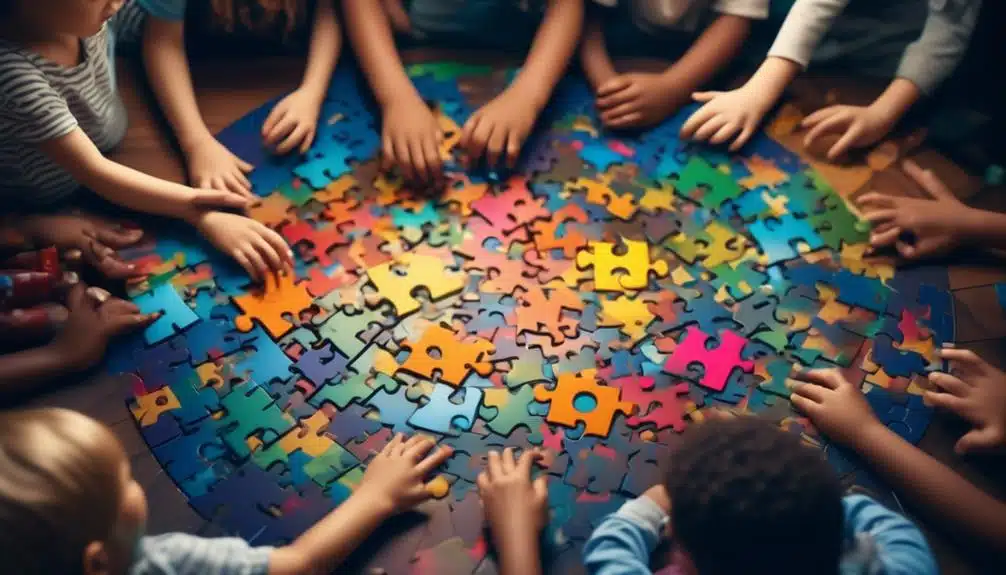
Recent Comments